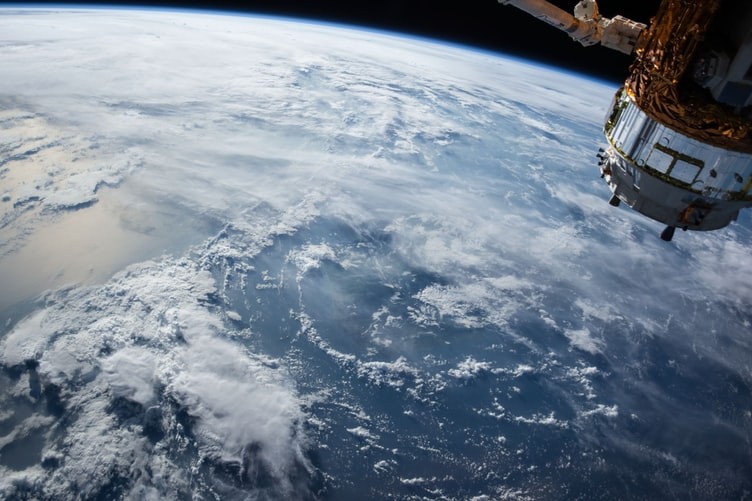Can you die from space junk? Scientists calculate the likelihood that someone may die from space debris. Data, after all, indicates that it is truly feasible.

Space Debris
It may seem absurdly unlikely that somebody might be killed by space debris that fell from the sky. After all, although there have been incidents of injury and property damage, no one has yet died in such an accident. But do we need to start taking the danger more seriously now that we send more satellites, rockets, and spacecraft into orbit?
A recent study in Nature Astronomy calculates the likelihood of fatalities falling rocket pieces over the next 10 years.
We are exposed to the danger of debris falling from space on us every minute. Around 40,000 tonnes of dust are produced annually by the minuscule fragments from asteroids and comets that patter through the atmosphere and land undetected on the Earth's surface.
Although we are not affected by this, spacecraft can be harmed by this debris, as was recently revealed with the James Webb space telescope. A body tens of meters wide occasionally manages to drive through the atmosphere to create a crater, and occasionally a bigger sample enters the atmosphere as a meteorite.
Additionally, albeit extremely infrequently, kilometer-sized objects can reach the surface and cause death and destruction, as seen by the absence of dinosaurs from the planet today. These are a few instances of natural space debris whose unexpected arrival is unpredictable and dispersed relatively equally worldwide.
However, the current study focused on the unplanned influx of manmade space debris from satellites and rocket launches, including discarded rocket stages. The scientists calculated the locations of rocket debris and other space trash when they fall to Earth using mathematical modeling of rocket part inclinations and orbits in space and population density below them, as well as 30 years' worth of prior satellite data.
A Small Possibility
They discovered that there is a little but considerable chance of pieces returning in the next ten years. However, this is more likely to occur across southern latitudes rather than northern ones. The study calculated that Jakarta in Indonesia, Dhaka in Bangladesh, or Lagos in Nigeria is around three times more likely to have rocket corpses land than New York in the US, Beijing in China, or Moscow in Russia.
The authors also estimated the risk to human life from uncontrolled rocket reentries during the next ten years. They discovered an average 10% risk of one or more casualties during the following ten years, assuming that each reentry disperses fatal debris across an area of ten square meters.
To date, it has been believed that there is very little chance that satellite and rocket debris will affect the surface of the Earth or aviation traffic in the atmosphere. Most research on this type of space debris has been on the danger posed by abandoned spacecraft that might interfere with the safe operation of active satellites. Explosions in orbit caused by unused fuel and batteries also produce more trash.
However, it is quite expected that the number of mishaps, both in space and on Earth, like the one that occurred after the launch of the Chinese Long March 5b, will also climb as the number of entrants into the rocket launch sector rises and shifts from government to private company. The 10 percent number is thus a modest estimate, according to the current study.
It is undoubtedly feasible to regulate debris reentry thanks to various technologies, but doing so is costly. For instance, spacecraft can be "passivated," where any remaining energy (such as fuel or batteries) is used up rather than saved after the mission's completion.
A satellite's chosen orbit can potentially lessen the likelihood of junk formation. Instructing a retired satellite to fly into low Earth orbit, where it will burn up, is possible.
Additionally, there have been attempts to launch reusable rockets, such as those developed by Blue Origin and SpaceX. As they return to Earth in a controlled manner, these produce much less debris, but there will be some from paint and metal shavings.
The hazards are taken seriously by several agencies. The European Space Agency is preparing a mission to use a four-armed robot to try and gather and remove space junk. The UN published a set of Space Debris Mitigation Guidelines through its Office of Outer Space Affairs in 2010, which were updated in 2018. These are recommendations, not international law, and do not provide instructions on how mitigation actions should be carried out or managed, as the authors of the current study note.
A Chance to Take Action
The paper makes the case that improving technology and more careful mission design will lower the uncontrolled reentry of spacecraft debris, reducing the danger of hazards worldwide. Uncontrolled rocket body reentries are a collective action issue; solutions are available, but each launching state must embrace them.
Government cooperation is not unusual, as seen by the agreement to outlaw ozone-depleting chlorofluorocarbon compounds. But unhappily, before taking such action, there typically has to be a large incident with ramifications for the northern hemisphere. Additionally, international agreements and protocol modifications take time.
It has been seventy years since the first satellite was sent into orbit in five years. It would be appropriate if all UN member states could sign a stronger and binding international convention against space debris to commemorate that day. In the end, such an agreement would be advantageous to all countries.
Related Article : Space Junk Heading Towards the Moon at Super Speed
For more cosmic news, don't forget to follow Nature World News!
© 2025 NatureWorldNews.com All rights reserved. Do not reproduce without permission.





